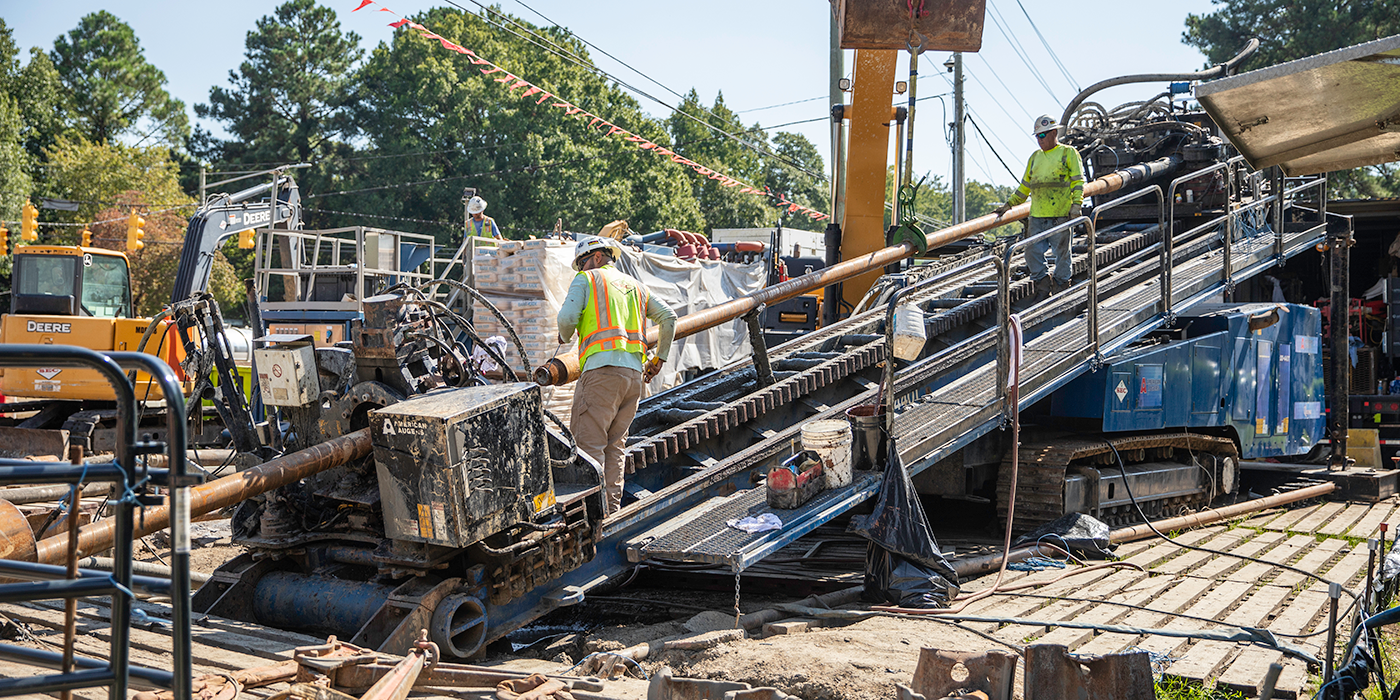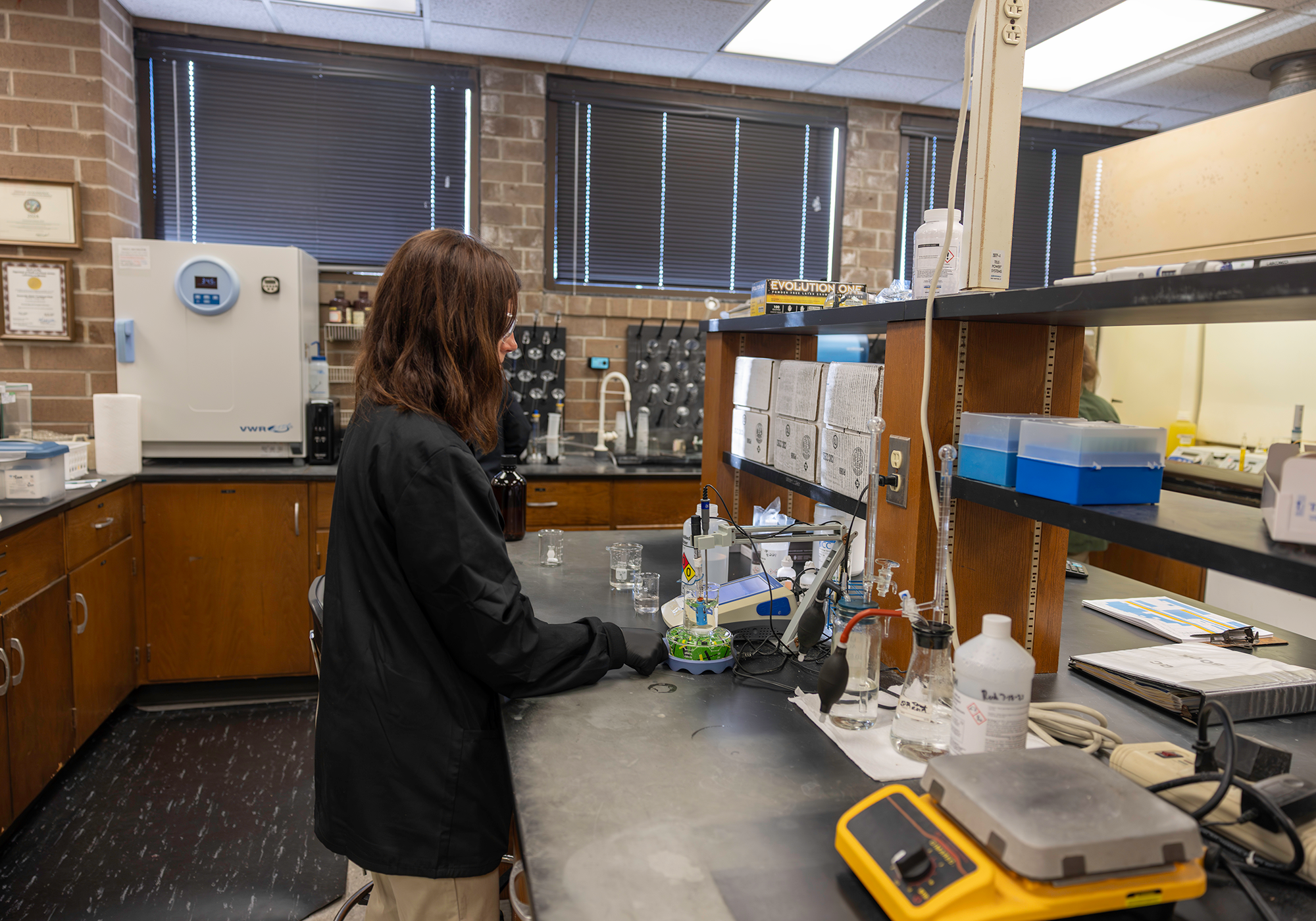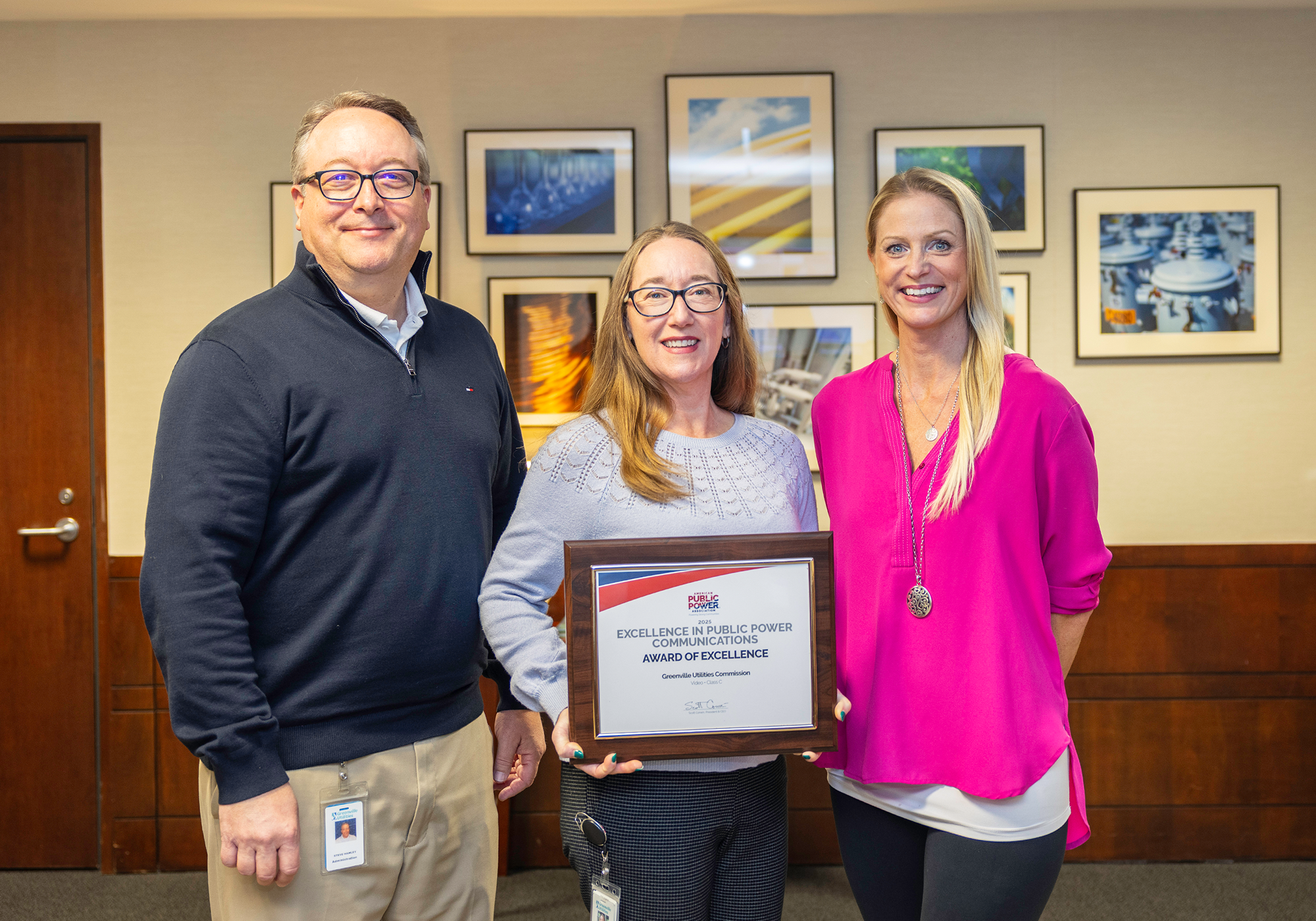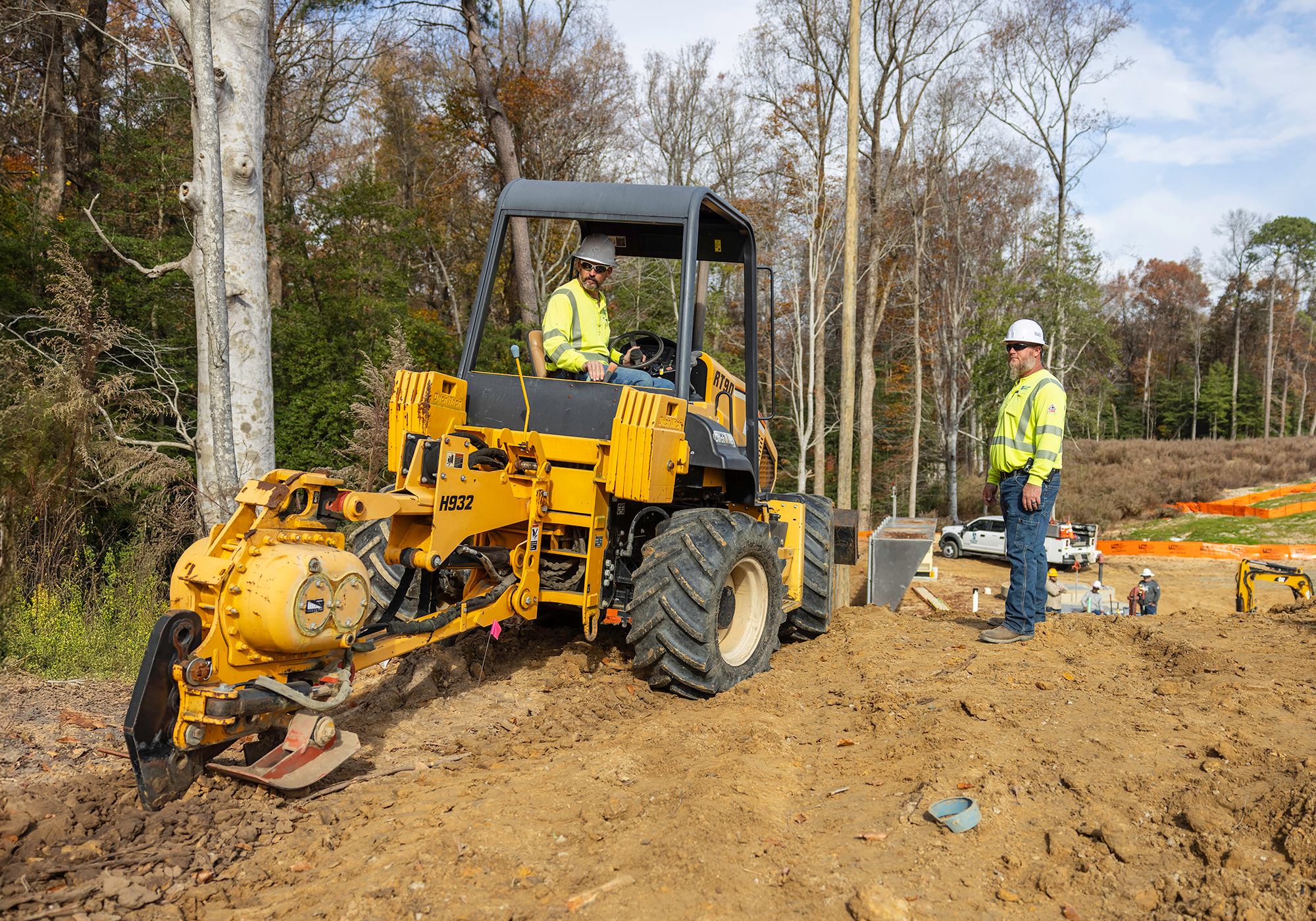
If you’ve driven through the intersection of Memorial Drive and Third Street over the past few months, you probably noticed heavy construction activity. That was a contractor for our Gas Department replacing a natural gas main that was attached to the Memorial Drive Bridge. The project began in early September and will wrap up by the end of the year.
Several years ago, the North Carolina Department of Transportation (NCDOT) announced plans to replace the North Bound Memorial Drive Bridge that spans over the Tar River, prompting our Gas Department to make plans to relocate the gas main. For operational and safety purposes, they ultimately decided to construct a new 8” steel main to be bored approximately 80 feet underground, running under the Tar River instead of attached to the bridge.
The first phase of this project involved welding together 40-foot sections of the steel gas main. “After each section is welded, they x-ray the connections to ensure the integrity of the welds,” said Dillon Wade, Gas Engineer II and Project Manager. “While the welding phase took place on the north side of the project limits, the contractor started horizontal directional drilling a pilot hole from the south side of the bridge. They were able to bore about 400 to 500 feet a day to complete the 4,200 linear foot bore.”
Once the new main welding and pilot hole drilling and reaming (or enlarging) were complete, contractors pulled the new main back through the hole in three sections approximately 1,400 feet long. The new main runs a total of 5,500 feet long, with approximately 4,200 feet running under the river.
Out with the Old, In with the New
After the new main was secured in place, contractors began the multi-phased process of transferring gas from the existing main to the new main. This involves cleaning, pressure testing, and hot tapping (connecting to a pressurized system without taking a main out of service).
Typically, gas from an old main being abandoned (like ours) will get purged into the air, but our Gas Department went with a new technology called cross-compression. “This process removes the natural gas from the section of main being abandoned and puts it back into our distribution system, significantly reducing the amount of methane released into the atmosphere,” said Dillon. “The goal is to reduce the line pressure from 60 psi to approximately 1 psi with the use of a vacuum compressor known as ZEVAC. This allows us to transfer 99+% of the natural gas from our existing line to our new pipeline, drastically reducing our emissions to less than 1%.”
The cross-compression process using ZEVAC equipment starts by injecting a slug of nitrogen into the new main. Nitrogen acts as a buffer between the air and gas. Natural gas is vacuumed out of the existing main and pumped into the new main. The air in the new main is purged out utilizing the natural gas from the existing main that is being abandoned. Once a 100% natural gas atmosphere was present in the new main, they closed it off and began “pickling” the line (adding extra mercaptan odorant since natural gas is odorless).
In the coming weeks, contractors will continue pickling the new gas main until they reach the regulated amount necessary for odorant. Now that our old gas main has been abandoned, NCDOT can perform their bridge demolition project.






